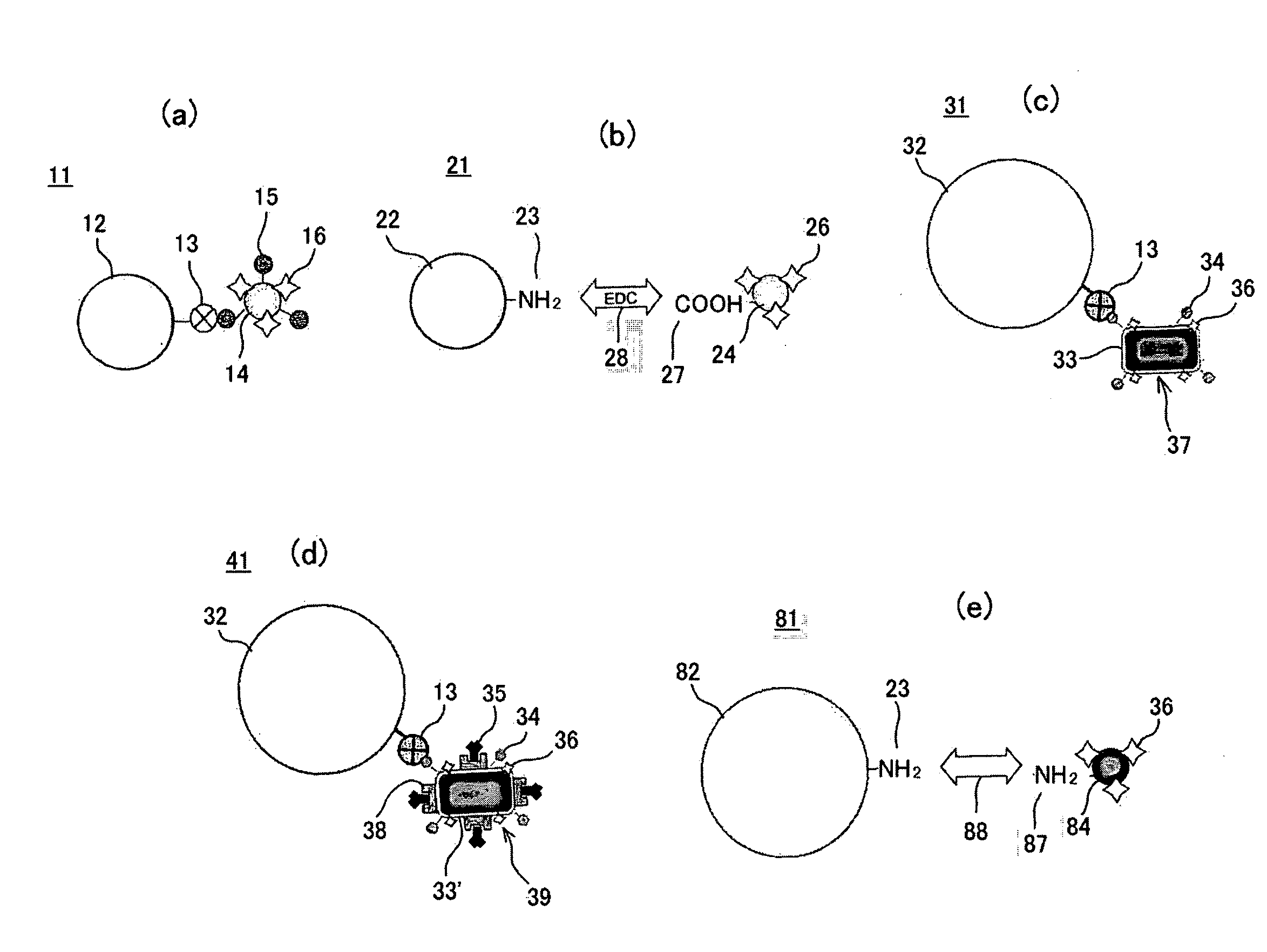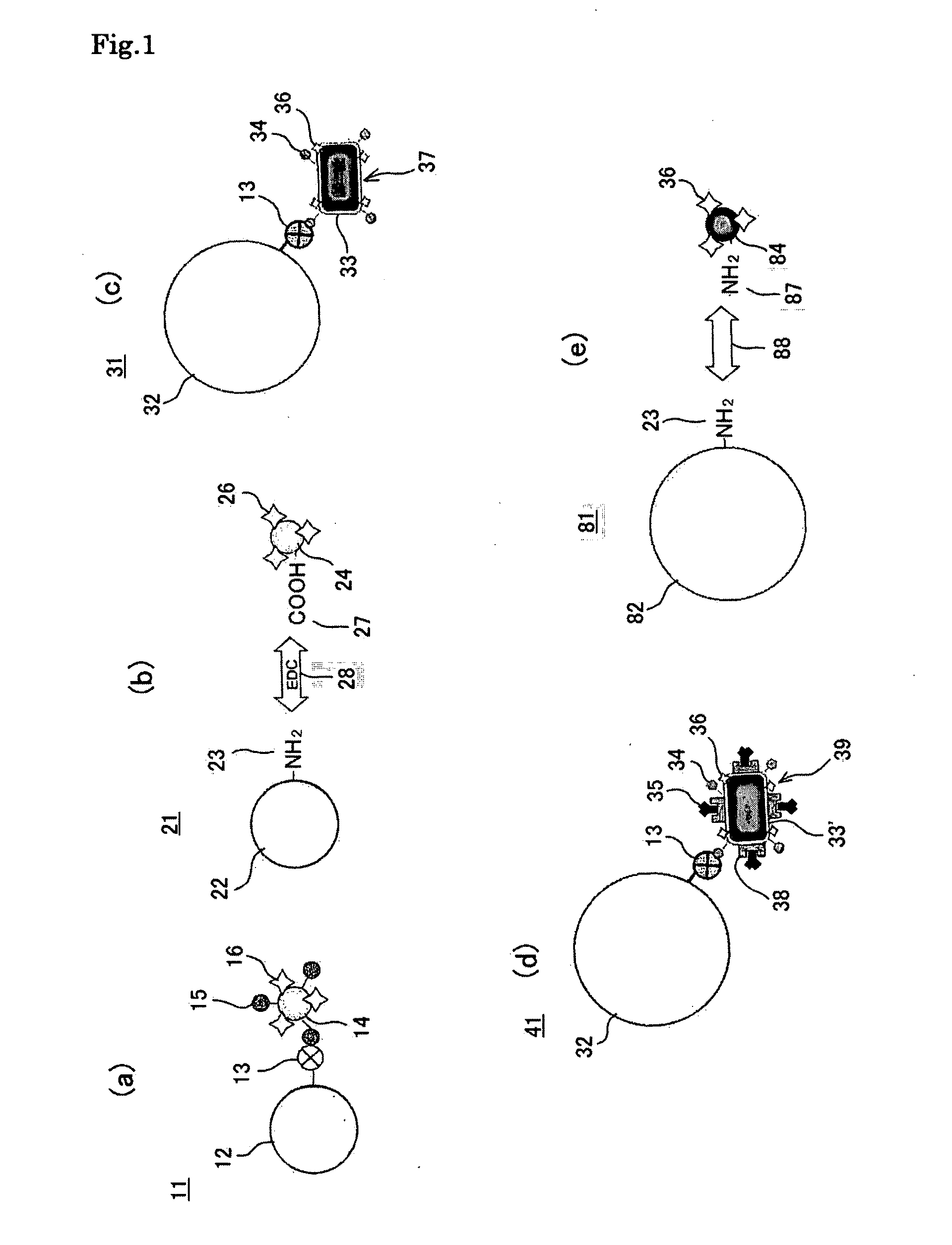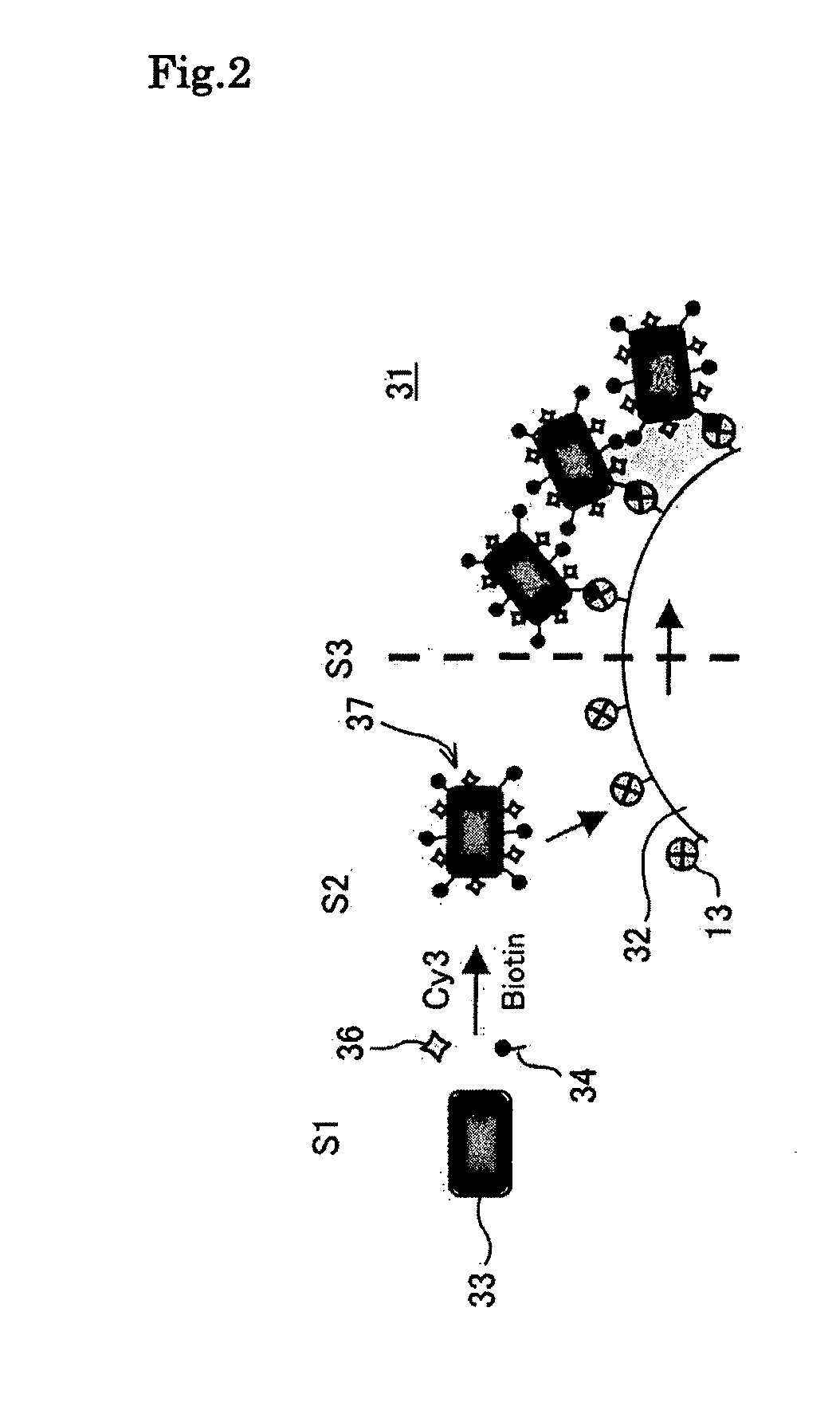Magnetic particle holding carrier and method for preparing the same
- Summary
- Abstract
- Description
- Claims
- Application Information
AI Technical Summary
Benefits of technology
Problems solved by technology
Method used
Image
Examples
experiment 1
[Experiment 1]
[0112]Immunoassay for detecting a prostate specific antigen (PSA) using a magnetic particle holding carrier according to an embodiment of the present invention is prepared (manually performed).
[0113](1) Study on the Concentration of Antibody Immobilized onto the Bacterial Magnetic Particles (BMPs)
[0114]In a step 41 of FIG. 11, the bacterial magnetic particles 33′ (ZZ-BMPs) displaying ZZ domains 38, which are an IgG binding sites of Protein A and obtained from a ZZ domain expressing strain were labeled with the fluorescent dye 36 (Cy3) and biotin 34. In a step S42, to 20 μg of the biotin / fluorescent dye-introduced bacterial magnetic particles 37′ (Cy3-[ZZ-BMP]-biotin), solutions of mouse-derived anti-human PSA antibody 60 (IgG2a) different in concentration (0 to 60 μg / ml, 20 μl) were added and incubation was performed while stirring at room temperature for one hour to immobilize the antibody 60. The antibody-immobilized biotin / fluorescent dye-introduced bacterial magnet...
experiment 2
[Experiment 2]
[0128]The magnetic particle holding carrier is stable during magnetic separation process carried out in the magnetic particle holding carrier treatment apparatus as described below.
[0129]A suspension solution (50 μg / ml, 2 ml) of biotin / fluorescent dye-introduced bacterial magnetic particles 37 (Cy3-BMP-biotin) was added to a suspension solution (3.0×106 beads / ml, 10 ml) of the streptavidin-labeled polystyrene beads, which were micro-size (5 μm in diameter herein) polystyrene beads whose surfaces were coated with streptavidin 13 serving as a receptor and which served as a particulate carrier 32. A reaction was performed for 15 minutes while maintaining a dispersion state by pipetting. This operation was repeated 10 times to prepare the magnetic particle holding carrier 31 according to the third embodiment of the present invention.
[0130]Subsequently, using the magnetic particle holding carrier 31, the stability of the biotin / fluorescent dye-introduced bacterial magnetic ...
experiment 3
[Experiment 3]
[0134]Next, the magnetic separation ratio of the magnetic particle holding carrier by the magnetic particle holding carrier treatment apparatus (full automatic immunoassay apparatus SX-8PC) is evaluated. The magnetic particle holding carrier 31 was magnetically separated and resuspended repeatedly (1 to 5 times) in the same manner as in Experiment 1 and transferred to the well 71b in the next step. At that time, the concentration of the magnetic particle holding carrier 31 was measured. At this time, the number of the beads of the magnetic particle holding carrier 31 before magnetic separation was set at 1.0×107. As a buffer solution for suspending the magnetic particle holding carrier 31, PBS (2001) containing 0.05% nonionic surfactant, Adekanol (ADK) was used. The magnetic separation rate was obtained based on the following equation:
Magnetic separation rate=concentration of the beads of magnetic particle holding carrier after magnetic separation / concentration of the ...
PUM
| Property | Measurement | Unit |
|---|---|---|
| Magnetism | aaaaa | aaaaa |
| Dispersibility | aaaaa | aaaaa |
| Covalent bond | aaaaa | aaaaa |
Abstract
Description
Claims
Application Information
 Login to View More
Login to View More - R&D
- Intellectual Property
- Life Sciences
- Materials
- Tech Scout
- Unparalleled Data Quality
- Higher Quality Content
- 60% Fewer Hallucinations
Browse by: Latest US Patents, China's latest patents, Technical Efficacy Thesaurus, Application Domain, Technology Topic, Popular Technical Reports.
© 2025 PatSnap. All rights reserved.Legal|Privacy policy|Modern Slavery Act Transparency Statement|Sitemap|About US| Contact US: help@patsnap.com



